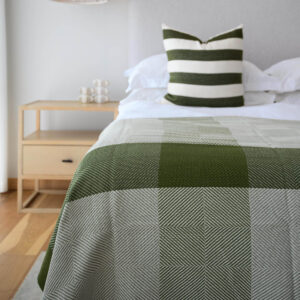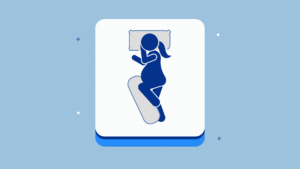Mattresses in Area: What Do Astronauts Sleep On Up There?

In a current article, we explored how a NASA invention for astronauts become reminiscence foam mattresses that enhance our sleep each night time (see From NASA to Your Bed room: The Evolution of Reminiscence Foam Mattresses). However what concerning the astronauts themselves? Up on the Worldwide Area Station (ISS), crew members aren’t dozing on king-size beds; they’re cocooned in sleeping luggage hooked up to the wall as they hurtle round Earth at 17,500 mph.
In reality, an astronaut on the ISS experiences 16 sunrises and sunsets each 24 hours, making a “regular” night time’s sleep a little bit of a cosmic problem. It sounds wild, but many astronauts insist that sleeping in house might be extraordinarily snug – maybe much more snug than on Earth – when you get used to it.

How Astronauts Go to Mattress
Astronauts don’t use conventional mattresses in house. As a substitute, every crew member sleeps solo in a small, closet-like pod outfitted with a sleeping bag tethered to the wall to forestall floating. In microgravity, there’s no up or down, astronauts can go to sleep upright, upside-down, and even on the “ceiling.” They zip into full-body luggage, typically strapping themselves in or including makeshift touches like Velcro pillows or bungee cords for that comfortable, bed-like really feel.
Their sleep quarters even have followers to flow into air, stopping harmful buildups of carbon dioxide, which does not rise in weightlessness. With out air flow, astronauts might rebreathe their CO₂ and get up with complications. To dam out noise from life-support methods and shiny daylight from the 16 day by day sunrises, crew members depend on earplugs and eye masks for higher sleep high quality.
There’s no mattress, not even reminiscence foam, NASA’s invention utilized in house shuttle seats, isn’t a part of an astronaut’s bedtime. However inside their darkish, ventilated pods, astronauts sleep safely and soundly, utilizing only a wall-mounted sleeping bag and some good variations.
Why Astronauts Sleep Much less in Area
You is perhaps shocked to study that astronauts often get fewer hours of sleep in orbit than we do right here on Earth. NASA schedules about 8 to eight.5 hours for sleep every day, however in actuality, astronauts solely common round 6 hours of sleep per night time on the ISS. There are a number of the reason why sleep high quality and amount can undergo in house:
-
Circadian rhythm confusion: Orbiting Earth each 90 minutes means astronauts see a dawn or sundown 16 instances day by day. This wrecks the physique’s pure 24-hour sleep cycle. To assist realign their circadian rhythm, NASA makes use of adjustable LED lighting on the ISS to imitate day and night time, however many crew members nonetheless want the assistance of sleep medicine to float off.
-
Fixed noise: The ISS hums with followers and equipment 24/7. Whereas earplugs assist, the noise can nonetheless have an effect on sleep high quality, resulting in extra disrupted nights.
-
An excessive amount of gentle: Even throughout “night time” hours, intense shiny gentle from the Solar can slip by way of shades. Many astronauts depend on eye masks or cowl their eyes to dam it out.
-
Microgravity unintended effects: In weightlessness, astronauts’ spines stretch, inflicting non permanent again ache. Fluid shifts can set off sinus strain and complications, which contributes to lack of sleep, particularly through the first few days in orbit.
-
Tight, heat quarters: The ISS is stored round 72°F (22°C), which may really feel heat in a compact sleep pod. Restricted house and the occasional rattling gear can even disrupt sleep.
-
Pleasure & stress: Floating by way of house and seeing Earth from above is thrilling, a lot in order that it’s exhausting for astronauts to go to sleep. Add in intense workloads and rotating shift work schedules, and it’s no marvel NASA has a staff to assist astronauts handle fatigue with strategic naps, caffeine, and pre-launch sleep planning.

Is Area the Greatest Place to Sleep?
Regardless of the challenges, many astronauts say sleeping in house is surprisingly snug, some even name it the very best sleep of their lives. That’s due to microgravity, which removes all strain factors. In a weightless sleeping bag, no a part of your physique is squished, nothing “falls asleep,” and each muscle can absolutely chill out. It’s like floating on an invisible, completely contoured mattress.
Astronaut Nicole Stott beloved it a lot she tethered her sleeping bag to the ceiling and described the expertise as “excellent.” As soon as they alter, many crew members report waking up refreshed after 6 hours of sleep, doubtless as a result of their muscular tissues aren’t working towards gravity all day.
Again on Earth, astronauts typically really feel “heavy” and uncomfortable for a couple of nights as they readjust to gravity. Seems, house may provide the sort of deep sleep high quality we’ve been making an attempt to recreate for many years, with the correct airflow, quiet, darkness, and complete physique help.
Area Pods vs. Luxurious Earth Beds
It’s fascinating to check an astronaut’s bedtime setup with our high-end sleep options right here on Earth. On the house heart, the “bedding” is as minimal because it will get: a sleeping bag hooked up to a wall, a air flow fan, earplugs, and possibly a skinny pillow or head cushion strapped in place. There aren’t any satin sheets, spring mattresses, or reminiscence foam toppers. The consolation comes from weightlessness and cautious engineering (cooling followers as quiet as attainable, and simulated darkness).
We will’t float right here on Earth (a minimum of not but), so we’ve invented all kinds of know-how to simulate that excellent consolation. Reminiscence foam, as an illustration, was born from NASA analysis, it was invented to cushion and shield pilots and astronauts by absorbing G-forces and distributing weight evenly. That very same materials now cradles sleepers right here on Earth, contouring to our our bodies to cut back strain factors (nearly like an try to recreate the pressure-free help of zero-g).
We even have adjustable mattress bases that may elevate our heads and legs. Some even promote a “Zero-gravity” sleep place, which NASA initially recognized because the posture astronauts naturally soak up microgravity.
An adjustable base means that you can elevate your head and ft, placing your physique in a impartial, weight-distributed place that seems like floating. This could relieve strain in your backbone and joints, very similar to the absence of gravity in house. In reality, NASA’s scientists developed this impartial physique posture for shuttle launches to cut back stress on astronauts, and now you possibly can mimic it in your bed room with the push of a button.

Then there are the luxurious linens and pillows we get pleasure from. On Earth, we love plush reminiscence foam pillows, cooling gel toppers, Egyptian cotton or bamboo sheets, and weighted blankets for consolation. In house, astronauts don’t get fancy sheets, they sleep of their train garments or PJs contained in the sleeping bag. They don’t use heavy blankets (they’d be pointless with out gravity to maintain them on). As a substitute of thread depend, they care extra about their cabin’s air high quality and temperature management. Basically, house replaces the smooth mattress and gravity combo with air move and microgravity to attain consolation.
One enjoyable truth: on Earth, we typically describe a snug mattress as “feeling such as you’re weightless.” With immediately’s high-end reminiscence foam mattresses and adjustable bases, that analogy isn’t far off, these merchandise purpose to cut back strain and create a floating sensation for the sleeper.
For instance, whenever you lie on a reminiscence foam mattress, it molds to your physique and helps you evenly, considerably like how floating in house distributes your physique’s strain evenly. An adjustable base in Zero-G mode tilts you in order that gravity’s pull is minimized on totally different physique elements. In a method, our greatest Earth beds attempt to obtain what an astronaut’s sleeping pod does naturally, maintaining you snug and freed from aches and pains as you sleep.
In fact, we Earthlings do benefit from the luxuries of soppy duvets, king-size mattresses to sprawl out on, and the liberty to roll round. Astronauts sacrifice a little bit of that freedom (they’re comfortable in a small bag) for the distinctive perks of microgravity. And whereas an astronaut may get up floating fortunately in the midst of their cabin, we’d most likely choose waking up on a secure, cozy mattress in our bed room.
Bringing Area-Age Consolation to Your Bed room
Area journey has taught us so much about sleep. We’ve realized that full weightlessness can result in extremely restful sleep, and that’s impressed improvements again right here on Earth. Reminiscence foam, adjustable “zero gravity” beds, superior local weather management, and bed room lighting, all these developments owe a nod to the house program. NASA found out learn how to assist astronauts sleep in excessive situations, and people classes have trickled down to assist enhance our nightly routines (no rocket required).
The underside line? You won’t have the ability to float in your sleep tonight, however you possibly can benefit from the subsequent neatest thing: a mattress that makes use of NASA-developed reminiscence foam to eradicate strain factors and preserve you comfortable.
Should you’re able to style space-age sleep consolation in your house, try Bedding Mart’s assortment of high quality reminiscence foam mattresses. They’re engineered with that very same gravity-defying concept in thoughts, contouring to your physique for optimum help, so you’re feeling gentle as a cloud. Pair it with an adjustable base to search out your excellent “zero-G” place, wrap your self in smooth, breathable sheets, and also you’ll be sleeping like an astronaut very quickly (minus the 16 dawn wake-up calls).






